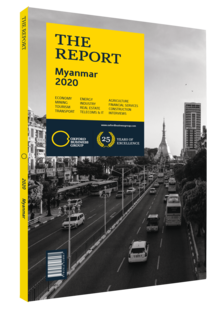Useful information for travellers to Myanmar
Etiquette
In a formal setting, “U” should be used in front of a name when addressing a man and “Daw” when addressing a woman. This roughly translates to Mr. and Lady. It is common practice to remove footwear before entering a workplace or home; removing shoes and socks before entering a pagoda or temple is required. A handshake is usually the first introduction in a business setting, and is used in greeting and as a farewell. When handing over something such as a business card, it is polite to touch your right elbow with your left hand or vice-versa. Business suits and smart casual attire are worn in an office setting, and are as common as the traditional longyi.
Ethnic Groups & Languages
There are over 100 languages spoken in Myanmar by 135 ethnic groups. The Burman, or Bamar, is the largest group, accounting for 68% of the population, followed by the Shan (9%), Karen (7%), Rakhine (3.5%), Chinese (2.5%), Mon (2%), Kachin (1.5%), Indian (1.25%) and Kayah (0.75%). The remaining 4.5% is made up of Wa, Naga, Lahu, Lisu and Palaung ethnic groups. The most commonly spoken language is Myanmar, which is the primary language of instruction at schools. Other major vernaculars include Shan, Karen, Kachin, Chin, Mon and Rakhine. English was widely taught at schools until the early 1960s until banned by the military. English was readopted in the late 1980s and is now generally spoken by the older generation and among the expanding urban elites and middle class, although it is far from universal.
Transport
Rail is not yet a practical transport method, thus the road network remains dominant. Taking a regular taxi requires the passenger to negotiate the cost of the ride in advance, although ride-hailing mobile application Grab, similar to Uber, has fixed rates and is much preferred among residents where available. Flying is the most convenient means of intercity travel, with round-trip flights between Yangon and Mandalay costing approximately $180. Foreign citizens must be prepared to pay above the local rate for plane travel.
Visa
Applying for a visa is done via a simple online process that issues both tourist and business visas, often with a 48-hour turnaround. A visa can also be applied for in advance through your local embassy or on arrival, but it is best to contact your in-country embassy before visiting Myanmar to ensure that you meet the requirements to do so. It is also important to ensure you have all relevant documents needed for a visa on arrival, or you will not pass immigration. A tourist visa costs $50, is valid for 28 days and takes no more than three days to be approved. A single-entry business visa is available for 70 days and costs $70. Business visas can also be obtained for six months or one year, and costs vary by the traveller’s country of origin. Applicants are required to submit a colour passport photo, a letter of invitation, a letter confirming the business purposes of the trip and company registration documents. All visitors must have a passport with at least six months remaining validity in order to enter the country.
Currency
The kyat is the local currency. While US dollars are commonly accepted, bills must be kept free of creases or tears. Exchange rates are published daily by the central bank, and higher denominations of US$ are often priced more competitively than smaller ones. Kyat notes are available in denominations of 50, 100, 200, 500, 1000, 5000 and 10,000. Recent efforts by the government and central bank have managed to calm inflation rates. As of November 2019 the exchange rate was around $1:MMK1515. ATMs are commonplace in populated areas, making it fairly easy to withdraw kyat. Payment by credit card is available in most tourist areas, but it is advisable to carry cash at all times.
Electricity
An inefficient transmission and distribution network means that power shortages often occur. Many hotels, apartments and businesses own generators as a result. Electrical outlets are generally the 220-Hz, AC type, or C or F – the same two-pin system used in Europe. Bringing an adaptor when you travel is recommended, as one can be difficult to obtain locally.
You have reached the limit of premium articles you can view for free.
Choose from the options below to purchase print or digital editions of our Reports. You can also purchase a website subscription giving you unlimited access to all of our Reports online for 12 months.
If you have already purchased this Report or have a website subscription, please login to continue.

